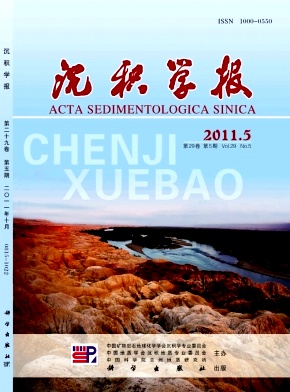Thermal Simulation Experiments and Kinetics on the System of Crude Oil and Magnesium Sulfate
- Received Date: 1900-01-01
- Rev Recd Date: 1900-01-01
- Publish Date: 2011-10-10
-
Key words:
- TSR
Abstract: In the system of crude oil and magnesium sulfate, thermal sulfate reduction was conducted in autoclave under certain temperature and pressure conditions. The thermalsimulation experiments were performed at 350~450℃ in the presence of water.
Gaseous products were analyzed using gas chromatography and microcoulometry. Gaseous products were composed of saturated hydrocarbons (C1 ~ C6), unsaturated hydrocarbons (C2~C5) and H2, CO2, CO. Content of CH4, H2 and CO2 increased with temperature growing. Gas dryness coefficient which was used to monitor the evolution of the hydrocarbon gas population also increased with temperature growing. Gas dryness coefficient of TSR was much more than Gas dryness coefficient of crude oil pyrolysis. It showed that the capacity of sulfate oxidization hydrocarbon increased with temperature growing.
Total sulfate of the liquid products was analyzed by microcoulometry. At the begining, content of total sulfur in liquid products of TSR was higher than crude oil. It implied the reaction temperature for the system of crude oil and magnesium sulfate was lower than the pyrolysis temperature of crude oil. With the temperature growing, content of total sulfur in liquid products of reaction of Tuha crude oil and magnesium sulfate gradually reduced. It may be that large amounts of Labile Sulfur Compounds (LSC) contains in Tuha crude oil, whose degradation rate was higher than generation rate during reaction. While content of total sulfur in liquid products of reaction of Shengli crude oil and magnesium sulfate increaseed and then sharply reduced. It may be a lot of Stable Sulfur Compounds (SSC) contained in Shengli crude oil, which was hard to degrade in lower temperature.
Solid products were analyzed by FTIR and Xray diffraction. MgO and MgSO4 were found to coexist in solid product of TSR. According to the the molar conversion calculated from the weight change of the solid products, the reaction kinetics was investigated. The activation energy of the system of Tuha crude oil and magnesium sulfate was 53.26 kJ/mol, while activation energy of Shengli crude oil and magnesium sulfate was 57.91 kJ/mol. Relative to the geological condition, the activation energy of crude oil and magnesium sulfate was lower. It was likely to be that the temperature of simulation experiment was higher than the critical temperature of water. Supercritical water could reduce the energy required to generate free radicals, which resulted in the faster reaction rate.
The activation energy of the system of Tuha crude oil and magnesium sulfate was higher than activation energy of Shengli crude oil and magnesium sulfate.This maybe relate with content of LSC. It showed that content of LSC in the crude oil effected on the extent of reaction. The higher content of LSC, the stronger activity of TSR. In addition, the LSC has certain effect on the initial temperature of the TSR. LSC leaded to form reactive intermediates sulfate ester in the process of TSR. Sulfate esters were relatively unstable and would be expected to oxidize the hydrocarbon. This mechanism provided a possible explanation on the role of LSC in enhancing the rate of TSR at the initial stages.
| Citation: | ZHANG Yonghan. Thermal Simulation Experiments and Kinetics on the System of Crude Oil and Magnesium Sulfate[J]. Acta Sedimentologica Sinica, 2011, 29(5): 994-1001. |






 DownLoad:
DownLoad: